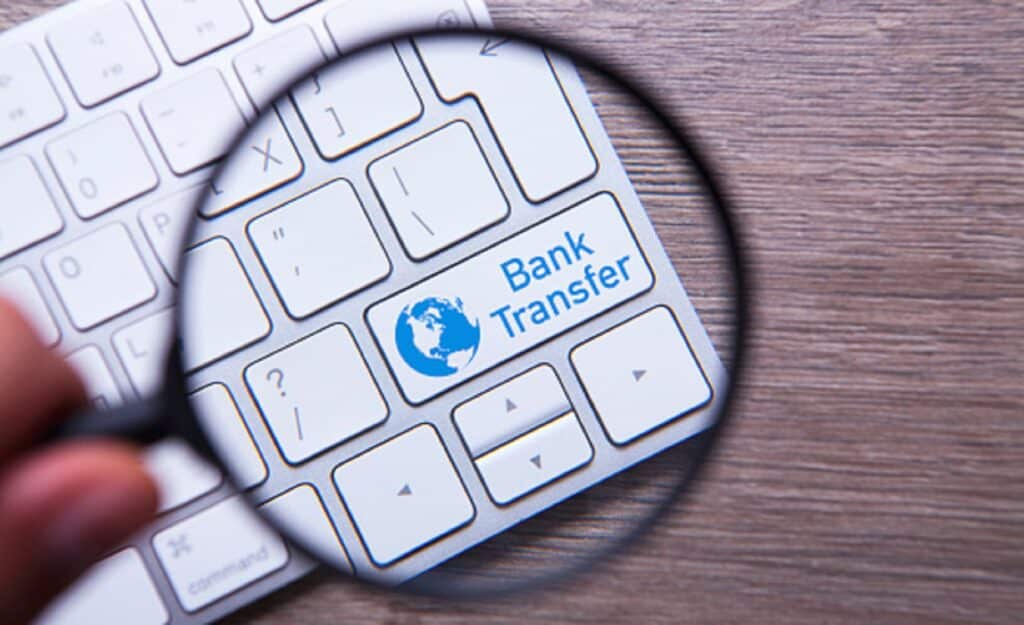Sending money to loved ones in another country can be challenging, thanks to the added headaches of exchange rates and international money transfer fees. Fortunately, many safe and affordable options for internationally transferring money exist today — though trying to figure out which is best for you can be overwhelming.
If you’re looking to avoid overpaying in fees and get more from each transfer, Remitly has a complete rundown on how to make international money transfers affordable.
Below, we’ll explain the basics of making international cash transfers and then tackle important questions about determining the cheapest way to send money internationally so that your loved ones receive more.
Sending money internationally: The basics
Before we get into how to reduce the costs of international money transfers, it’s important to understand a bit about how it all works and what your options are.
What are the ways to send money overseas?
Many people mistake overseas money transfers as being possible only through your bank. However, plenty of independent money transfer companies beat the bank in both affordability and convenience.
To make international money transfers, you actually have a few options:
- Traditional banks and credit unions: Through financial institutions, you can make bank transfers from your bank account to another person’s. They often charge hefty fees for bank transfers, but some people who need to send money internationally prefer to go through their banks because their money is already in their accounts.
- Brick-and-mortar money transfer services: Many standalone businesses, convenience stores, and big box stores offer money transfer services. These services typically require you to stop in to make money transfers. Fees for money transfers at these businesses are often less than what traditional banks charge.
- Money transfer apps and websites: Online and mobile money transfer services allow you to send money internationally anytime from anywhere. Because they don’t have the overhead of running brick-and-mortar locations, these money transfer providers often charge the lowest fees and offer the best exchange rates for people sending money overseas.
How is a money transfer different than a wire transfer?
Wire transfers and money transfers both involve moving money from one person to another electronically, but they’re not entirely the same.
Wire transfers use a specific electronic system called SWIFT to move money from one bank account to another. Because you typically send them through banks, people often refer to these transfers as bank transfers.
There are two main kinds: domestic wire transfers that involve accounts based in the same country and international wire transfers that involve accounts based in two different countries. When you wire money internationally, you typically pay additional fees because the transaction involves multiple currencies and are more complex.
Money transfers use methods of communication outside of the SWIFT system to send money electronically. They can move money from bank to bank, but they also give you other ways to send money, such as using a debit card. We’ll get into this point more in a minute.

How do bank fees compare to fees from money transfer services?
Sending money abroad through your bank may be secure and reliable, but it generally comes at a steeper cost than sending payments through a licensed money transfer company.
In the case of an outgoing international wire transfer, bank fees typically range between $15 and $50 per transaction. Some banks may even charge an initiation fee based on how you make your transfer — for example, charging an additional amount if you did it in person rather than online.
Transferring money internationally via your bank makes sense if you and your recipient both use the same financial institution, as these transfers may be free.
Otherwise, an independent money transfer service will generally save you more by offering lower fees for money transfers.
What are the other advantages of using money transfer services when sending money internationally?
In addition to usually being the cheapest international money transfer option, money transfer services have other advantages for sending money internationally. These include:
Speed
An international bank transfer usually takes about five days to get to the recipient’s bank account.
If your loved one needs access to funds more quickly, an international money transfer service may be the better option. When you send money via a debit or credit card, the recipient may be able to access the funds in just a few minutes.
Exchange rates
You can think of an exchange rate as the value of trading different currencies or how much one unit of currency can be exchanged for another foreign currency. These rates change constantly. The going exchange rate could actually be different depending on what time of day you send money.
A provider’s exchange rate impacts how much money your loved one receives. Let’s take a quick look at how.
Imagine you’re sending money from the U.S. to India. One online provider has an exchange rate of 1 USD = 83.1 INR, while your bank sets the exchange rate at 1 USD = 82.6 INR.
With the online provider, your recipient would receive 831 INR from a US$100 transfer. They’d only get 826 INR from the bank.
Generally, you’ll get the best exchange rate from online and mobile money transfer services. As previously mentioned, these providers have fewer costs, so they can offer a more competitive exchange rate than what you’d expect to pay for bank transfers.
More flexibility
With bank transfers, you have only one way to send money. The funds will come from your bank account and get credited to your loved one’s account.
Money transfers can involve moving money from a bank account to a bank account, but there are other payment options as well. Depending on the service, you may be able to use a credit or debit card, Google Pay, Apple Pay, or other methods to send money.
Recipients also get more ways to access the funds. They might get a deposit into their bank account, be able to pick up cash at a brick-and-mortar outlet, receive the funds in their mobile money app, or even get the money delivered right to their door.
How to choose a money transfer service

Many money transfer services will allow you to transfer online, via a mobile app, or in person. When it comes to choosing a safe and reliable money transfer service, you should pay close attention to these eight key points:
- Exchange Rates
We have already established that the exchange rate can vary significantly between money and bank transfers. It’s important to note that the exchange rate can also differ from provider to provider. As a result, you’ll need to consider the exchange rate when comparing ways to send money internationally. - Transfer Fees
Whether you’re sending or receiving money, banks and money transfer companies charge fees for their services. These fees, unfortunately, don’t come in just one shape or size. Some assess a flat fee for all transfers to a country. Instead of fixed transfer fees, some providers charge a percentage of the amount being transferred, which can be expensive when making large money transfers. - Security
Just like mailed checks are susceptible to getting lost or stolen, wire transfers and electronic payments are also vulnerable to security risks. Using the wrong service could jeopardize your transfer and lead to identity theft or fraud. - Convenience
In the past, sending money abroad generally required going to a bank or transfer service in person. Mailed checks presented another option, but generally at the expense of time and security. Now, apps like Remitly offer online money transfers, making it possible to send funds from a mobile app or website with just a few clicks. - Delivery Time
The speed of delivery from modern money transfer services ranges anywhere from instantaneous to a few days, with some providers charging more for faster delivery. For those with time-sensitive international transfers, you’ll want to find a company that can accommodate your specific needs and do so for a reasonable price. - Transfer Limits
Often, money transfer companies allow you to transfer money up to a set amount within a given time. Since each provider sets their own transfer limits, it’s important that you find one that matches the frequency and size of your transfers.
To learn more about transfer limits with Remitly, visit our help center page.
- Versatility
As previously mentioned, a money transfer service may provide a variety of ways for you to transfer money internationally and different options for how your recipient can access the funds. Be sure to choose a cash transfer provider that fits both your and your loved ones’ needs. - Support
Whether you’re arranging for cash pickups or making a deposit in your loved one’s bank account, you want to ensure that your money transfer goes through. When problems arise, you want to be able to handle the issue quickly, making it important that your international transfer service makes it easy to get help.
How to compare money transfer fees
Some providers are less than forthcoming about their fees, making it all the more frustrating when you want to send money abroad. To avoid this stress — and get more from your international transfers — we’ll dive into common questions about how to find the most affordable service.
How are transfer fees usually calculated?
Banks and money transfer services typically calculate their fees based on:
Transfer Amount
Some services charge a flat fee regardless of how much you send. Others put a spin on this with a tiered system — for instance, charging $3 on transfers up to $100 and a higher amount for larger transfers. Others yet, like PayPal, charge a fixed percentage of your total transfer amount, so the more money you send, the more expensive your transfer is.
Location
Currency conversion is sometimes, but not always, involved when sending money abroad. Because of this, banks and money transfer services often consider your originating country as the sender and the receiving country where your recipient is based.
Receiving Method
Modern money transfer providers offer multiple receiving options for anyone you’re sending money to, with varying fees per method. Most commonly, funds can go straight to recipients’ bank accounts or to a designated location for cash pickup. How your loved one will receive money on their end may impact the fees.
Payment Method
How you fund your transfer also affects your total amount of fees. Credit card payments often incur a higher fee, while payments initiated through a direct debit from a bank account are usually the cheapest transfers.

You may come across standalone money transfer companies claiming zero service fees.
While this sounds appealing, you should be aware: these services generally use expensive exchange rates to make a large profit.
In other words, the amount your recipient actually receives might be much lower than the amount you originally sent. In this case, another provider that charges a transfer fee but offers more reasonable exchange rates would get you a better deal.
Although they’re not charged by the service you use to send money, cash advance fees may also fall under the hidden category. If you use a credit card to send money internationally, your credit card company may charge a fee for accessing the cash credit line associated with your account. Often, the fee is a percentage of the cash advance.
Finding the best international money transfer fees
High fees can make sending money internationally a hassle. Fortunately, there’s a wider range of international transfer options than ever before.
With the right service, you can rest assured knowing that neither you nor your recipient overpays in fees. The key is to do some research to find out which is the best for you.
Visit the homepage or download our app to get started.
